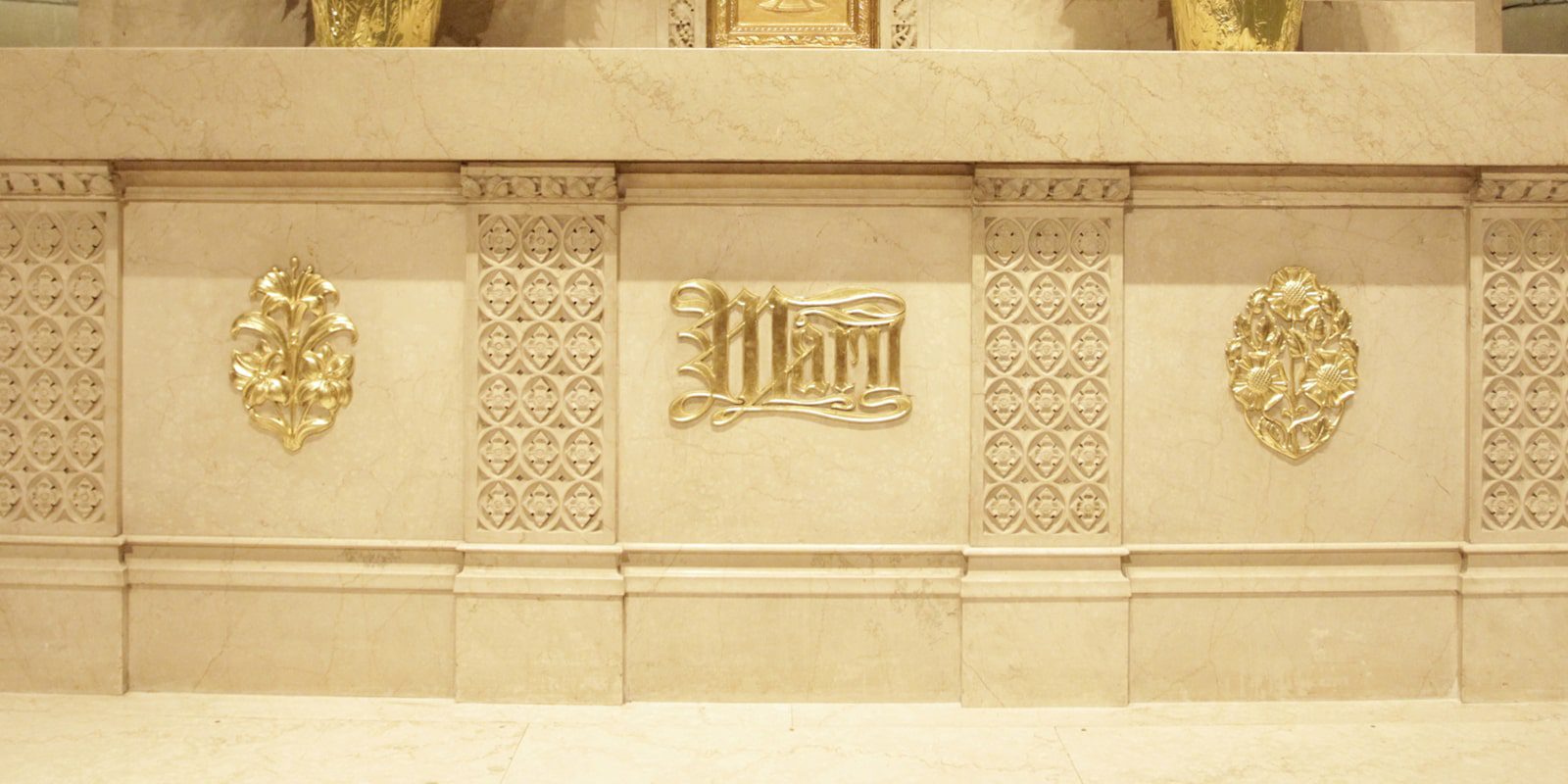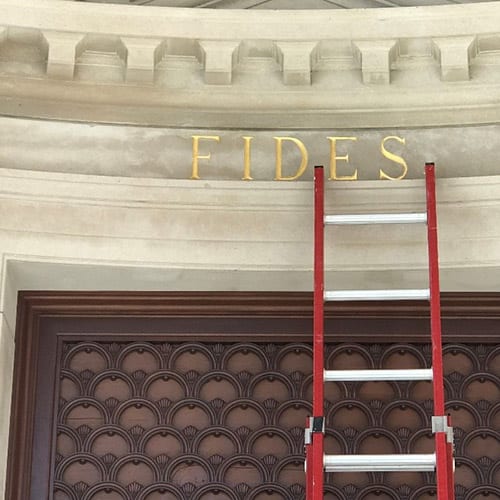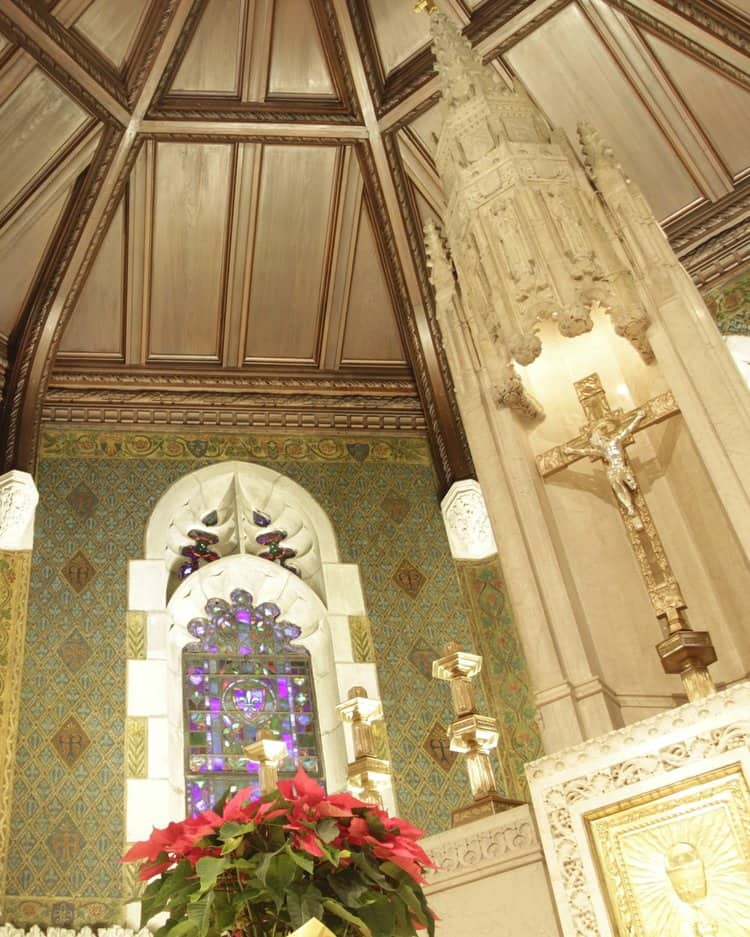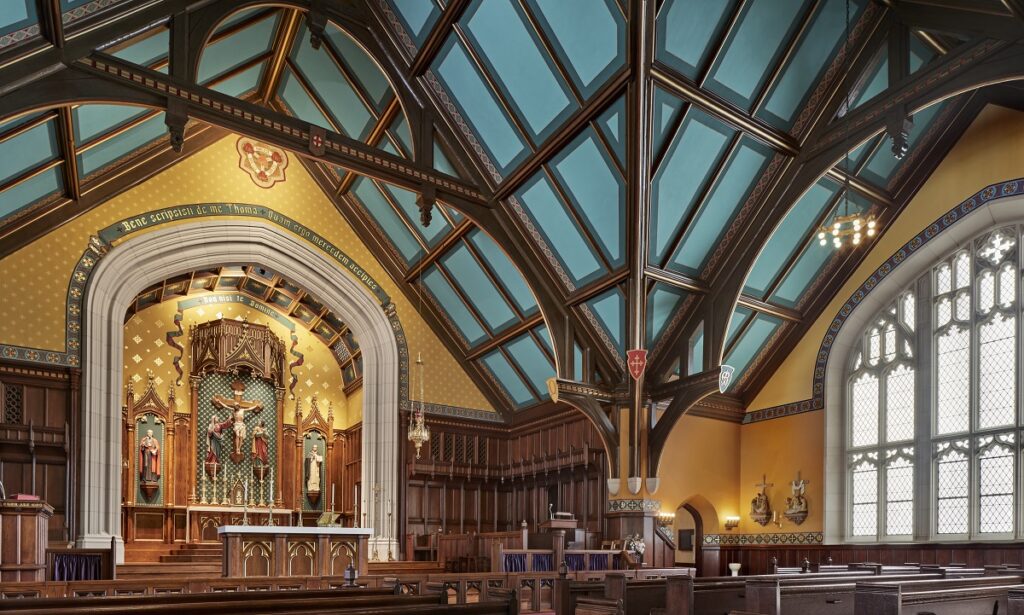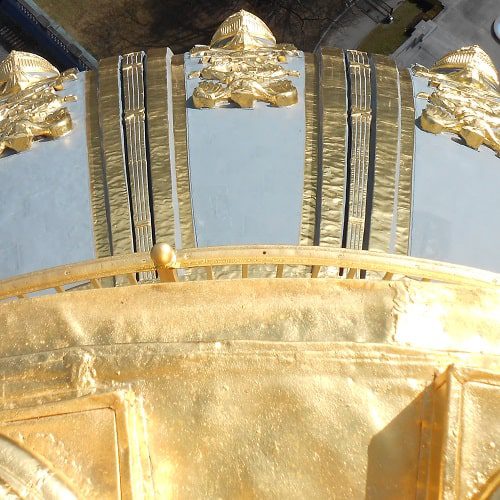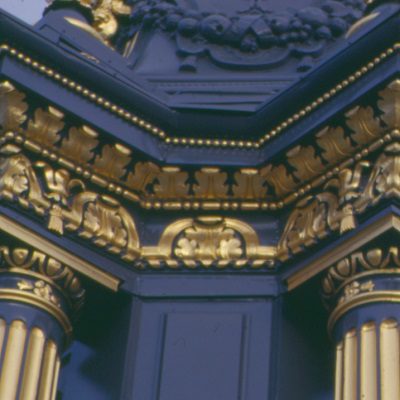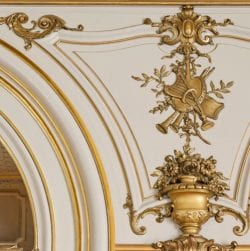Gilding is a fine art that can be used in the construction and restoration of any building. Adding both elegance and magnificence to a building’s aesthetic, gilders take great pride in their ability to beautify architecture through their craft. The versatility of the gilding process allows for objects as small as a jewelry to structures as big as domes to be adorned in gold or another leaf. Architectural gilding is the process of adhering thin sheets of metal (usually gold) called leaves to the surface of any substrate to provide an ornamental effect in the building. This process requires the skilled hands of a knowledgeable artist so it is important to contact a professional gilder if you are looking for a project to be implemented at your own space. John Canning & Co. has conducted numerous interior and exterior gilding projects on university chapels and parish churches throughout the country. Here is an overview of gilding implemented in chapels and churches.
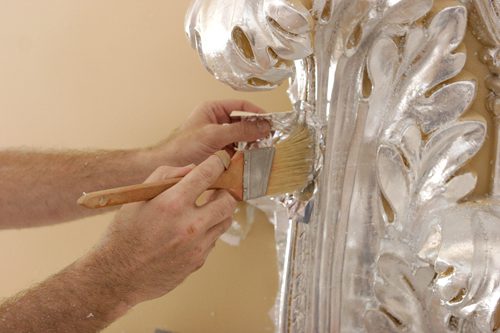
Gilding in process
The Religious Symbolism and History of Gilding
From its conception in ancient Egypt to its use in modern architecture, gilding has always conveyed a sense of importance and reverence for the building which it decorates. While civil and even domestic gilding exists, this art is especially known for its religious use in churches and university chapels alike. Usually elevated above the head of the viewer, gold leaf brings one’s mind up to the heavens while the purity of its color represents the majesty of the divine. Brightly reflecting the sun, gilded domes and exteriors stand out among college campuses, acting as a natural beacon to signify the sacredness of the building. The dome especially serves as a reminder to all students to take time for contemplation and prayer, and welcomes whoever enters the church’s walls. Below is a few of the university chapels and churches which Canning has had the pleasure of adorning interiorly and exteriorly in gold leaf.
St. Mary’s Chapel – Boston College
Gilding was conducted on the altar in St. Mary’s Chapel at Boston College. Utilized as a decorative accent to the white marble, gold leaf lettering and ornamentation were applied on the front of the altar. This job required high levels of detail due to the intricacy of the lettering and floral designs. Factors that needed to be considered during this job included the marble’s ability to hold the gold leaf during and after the process as well as possible wear due to the material’s exposure to contact.
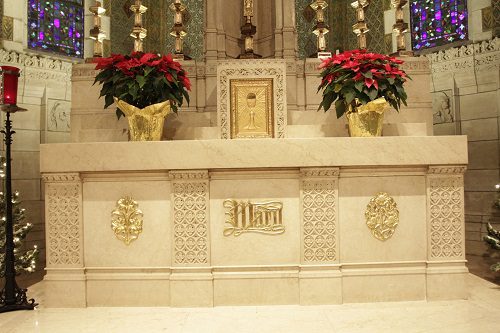
Gilded altar
Due to the solemnity of the gold’s location, a professional and reverent level of artistry was needed so as to elevate the architecture without distracting onlookers from the building’s purpose.
Sterling Chapel – Yale University
Exterior gilding is highly ornamental in an architectural aesthetic. Often used on domes, gold leaf catches the sunlight, illuminating the building’s design. This is especially the case with Sterling Chapel located at Yale University. Canning had the pleasure of gilding the dome and steeple cross of this 20th century Georgian style church. Conducting the full process, the gilding team primed and coated the dome with gold leaf. When implementing large scale gild projects such as Sterling Chapel, a slow-set oil size is used as an adhesive for the sheets of metal. This composition does not solidify for about a half-day, giving the gilders a large margin of time to lay down the entirety of the gold in a delicate and detailed fashion.
Gilded dome (left) and half-gilded cross (right)
The location of the building is an important factor when doing exterior gilds. The cross on top of the dome and the dome itself are exposed to all of the natural elements of New England weather. This includes snow and hail which can be very abrasive to the surface of a building. This was factored into the project planning so that the most durable adhesive and gold leaf would be used while still maintaining the delicacy of the art.
Christ Chapel – Hillsdale College
Similar to the detailed work at St. Mary’s Chapel, gold leaf lettering was installed in the entablatures throughout Christ Chapel at Hillsdale College. This work was done on both the interior and exterior of the church. The gilding process had to be executed in high areas and covered large horizontal spans of limestone. Contrasting with the striking magnificence of the ancient Greek Pediment, and framed by Doric capitals, the gold script is eye catching for anyone who enters the sacred building.
Gold leaf lettering on limestone
Further gold leaf accents were installed in plaques at the base of the coffered ceiling. This continued the elegant aesthetic throughout the interior of the building without overpowering the off-white hue of the limestone.
In Summary
Gilding is a unique and beautiful architectural element which transforms a surface into an elaborate and elegant piece of art. Able to be conducted both interiorly and exteriorly with different types of metals, gilding’s versatility makes it an attractive tool to architects and owners alike. If you are interested in gilding for your building or have questions regarding the process, more information can be found here.

